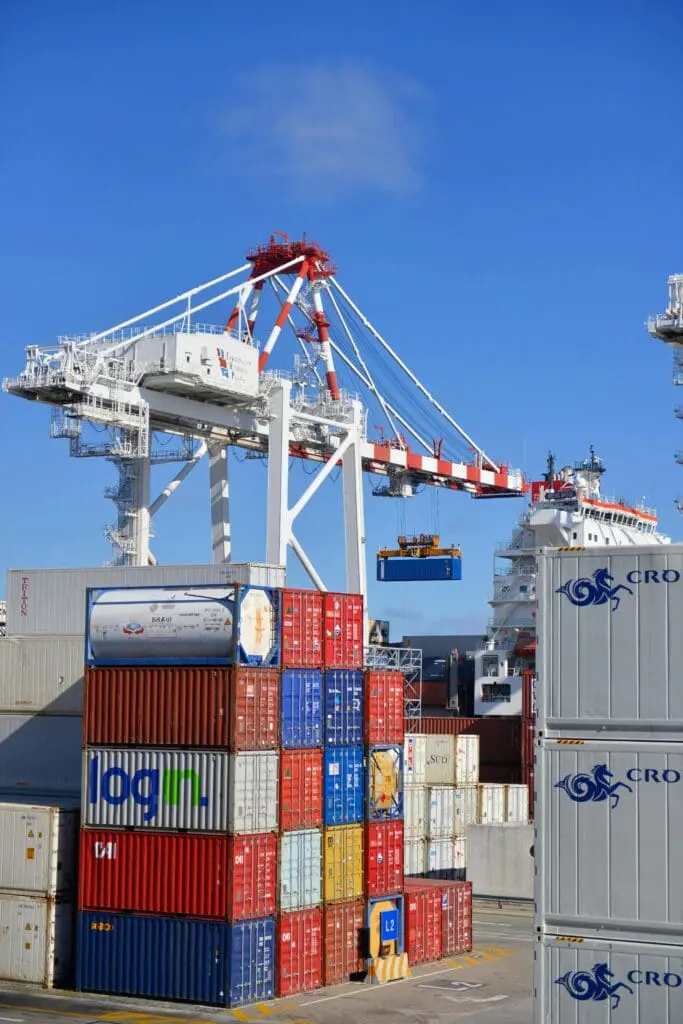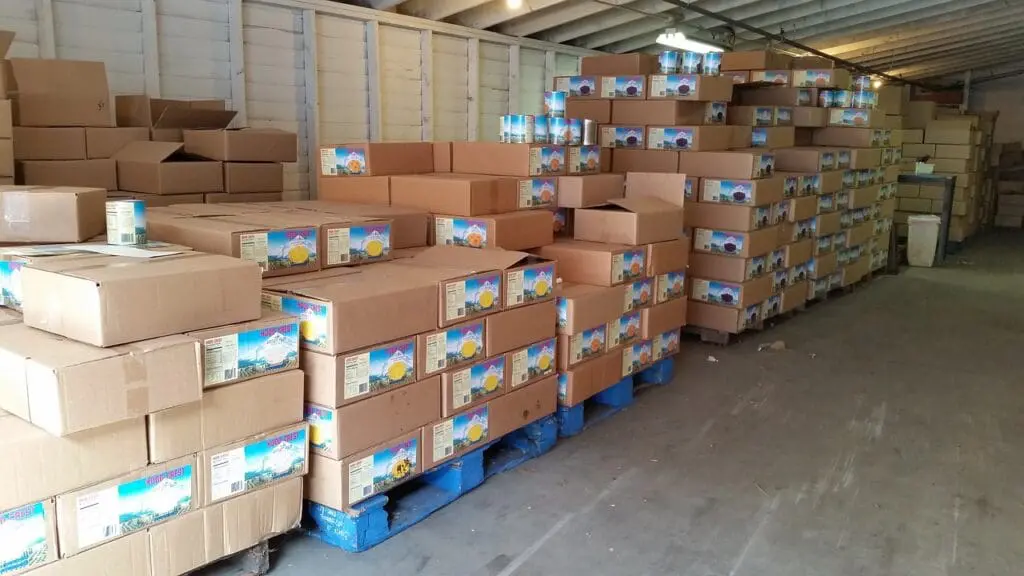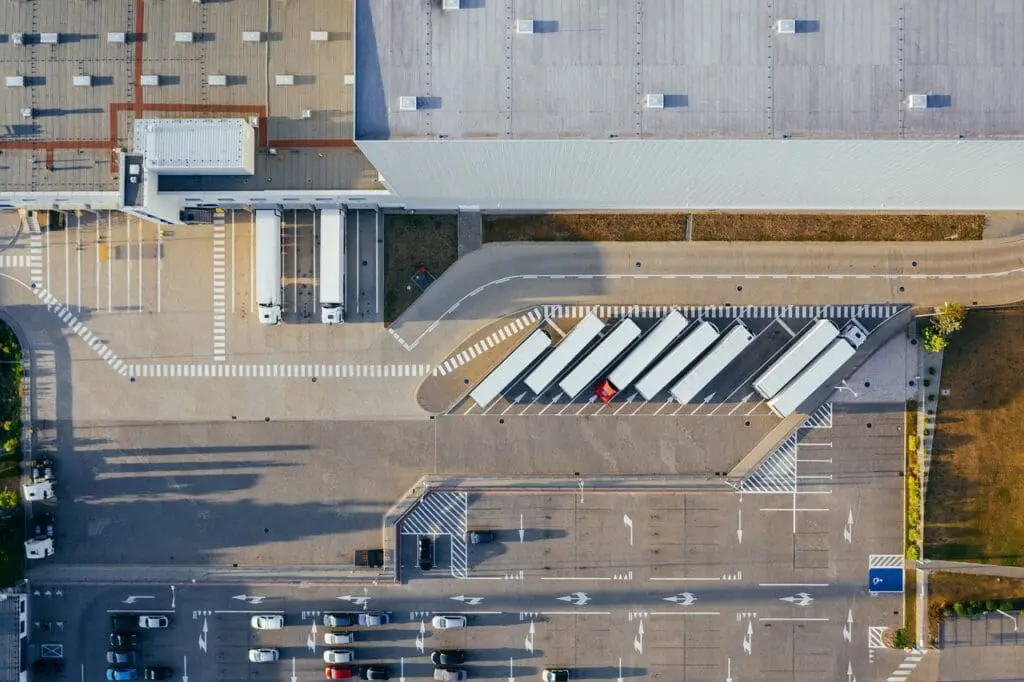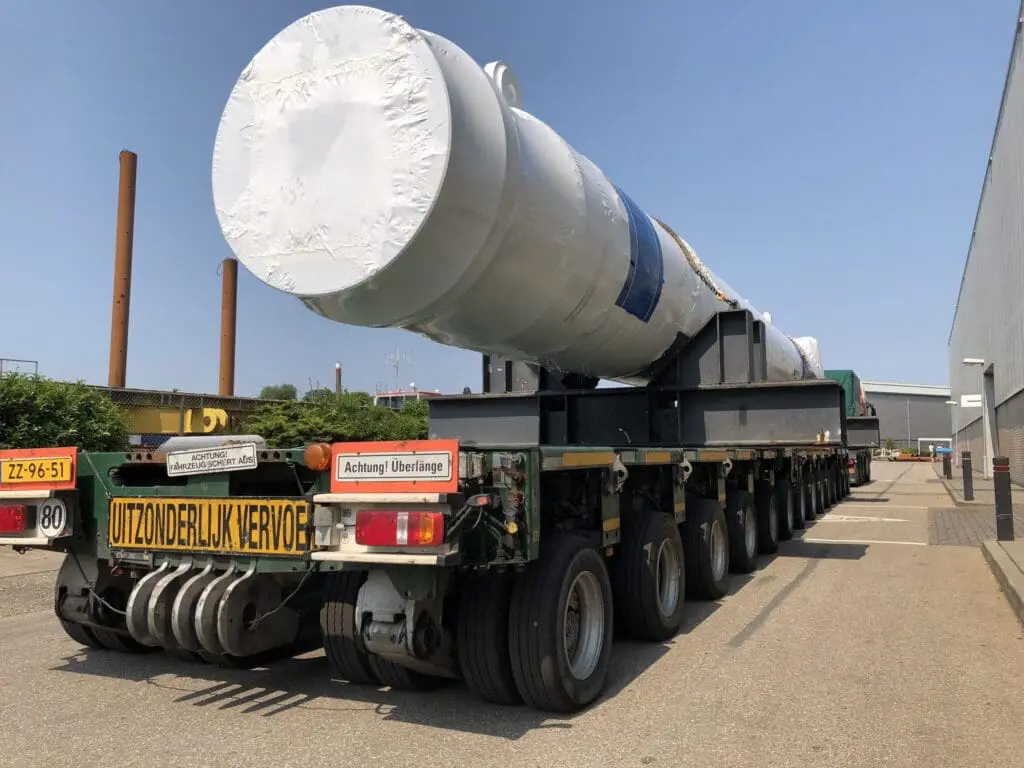Logistics markets
The impact of software on logistics markets: insights and practical examples
The logistics sector consists of a wide range of markets, each with its own characteristics, laws and regulations, and logistical processes. Whether it’s excise goods, fresh products, or project cargo, each segment brings unique challenges. Think customs requirements, temperature control, product safety, or the need for fast turnaround times. In such a dynamic playing field, it is crucial for logistics service providers to operate flexibly, respond quickly to changes, and simultaneously maintain full control over their processes.
Quick navigation:
- 1. Excise goods: control over regulations and processes
- 2. Fruit & Vegetables and Floriculture: logistics under time pressure
- 3. Bulk goods: logistics on a large scale
- 4. Consumer goods: logistics in a demanding market
- 5. Food & Beverage: logistics for fresh and sensitive products
- 6. Dangerous goods: safety first
- 7. Production & Trade: logistics as an extension of your core process
- 8. Project cargo: specialized transport requires specialized software
- Conclusie: Adaption's software oplossingen voor de logistiek
Logistics markets

Modern software solutions, such as Warehouse Management Systems (WMS), Transport Management Systems (TMS), and Forwarding Management Systems (FMS), are essential for efficiently organizing and managing logistics processes. These systems support streamlining operations and addressing sector-specific needs.
In this blog, we guide you through eight diverse markets within logistics. We’ll discuss each market based on key characteristics, a real-life example, and a suitable digital solution.
1. Excise goods: control over regulations and processes
The storage of excise goods (such as alcohol, tobacco, or fuels) requires strict compliance with laws and regulations. Any error in registration or inventory management can lead to heavy fines or delays. At the same time, customs authorities are increasingly demanding that everything be digital and instantly accessible.
Case example: customs inspection
Lisa is a logistics manager at a storage facility for alcoholic beverages. During an unannounced inspection, customs request an up-to-date overview of all excise goods, including documentation of incoming and outgoing flows. Her team attempts to manually collect data from separate systems and spreadsheets, which is time-consuming and error-prone. Ultimately, a shipment turns out to be incorrectly registered, leading to disputes and delays.
A solution that brings clarity:
Situations like these highlight the importance of a central system that provides real-time insight into excise inventory and can automatically generate reports. When processes and data converge in one place, it becomes much easier to comply with regulations and respond faster during inspections or questions from authorities.
2. Fruit & Vegetables and Floriculture: logistics under time pressure
The Netherlands is a global leader in the production and export of vegetables, fruits, and flowers. From greenhouses in the Westland to distribution centers near Schiphol and the Port of Rotterdam, millions of fresh products are processed and transported daily. Due to short shelf lives, strict quality requirements, and high volumes, logistics in this sector are constantly under pressure. Speed, precision, and real-time insight are essential.
Case example: flowers ready for departure
Martin works at a logistics provider that transports flowers from auctions to customers across Europe. Every morning, he receives hundreds of roll containers with fresh flowers. They must be sorted, checked, and shipped within a few hours. On a busy day, things go wrong: part of the shipment is placed at the wrong dock, causing a carrier to be delayed and a customer to receive their delivery late. The cause? No real-time insight into dock planning and insufficient control over inbound and outbound goods flow.
Efficiency through insight and automation:
These situations often occur in the fruit & vegetables and floriculture sector, where time pressure and accuracy go hand in hand. Good logistics software can make the difference: think automated cross-docking, real-time inventory management, smart dock planning, and multimodal transport management. This not only ensures faster turnaround times but also fewer errors and better customer satisfaction.
3. Bulk goods: logistics on a large scale
Bulk goods such as grains, minerals, liquids, and chemicals are moved in enormous volumes, often unpackaged. This requires a different approach than general cargo. The Netherlands plays a key role here, with the Port of Rotterdam as an international hub. In this sector, everything revolves around efficiency, safety, and precise planning. From silo storage to automated loading and unloading: every part of the process must be correct to avoid delays, waste, or risks.
Case example: grip on grain
Jan is operations manager at a company that stores and distributes grains from a terminal in the Port of Rotterdam. He receives large volumes daily that must be distributed across various silos. His biggest challenge? Maintaining insight into current inventory levels, determining the correct loading sequence, and preventing loading delays. During a busy period, the wrong batch was loaded, causing a customer in Germany to miss an important delivery. The cause: manual planning and a lack of real-time insight into silo content and inventory rotation.
From overview to efficiency:
In bulk logistics, a small mistake can have big consequences, from quality loss to transport problems or even fines due to incorrect documentation. That’s why digital support is essential. Think automated inventory management in silos or tanks, real-time loading and unloading information, and seamless integration with transport planning and documentation. Repacking bulk into smaller units (e.g., bags or big bags) must also be controlled and efficient, especially when different customers have specific quantity or packaging requirements.
4. Consumer goods: logistics in a demanding market
From clothing and electronics to furniture and household items, consumer goods logistics runs at high speed. With the rise of e-commerce and international imports, customer expectations and process complexity are increasing. Companies must deliver quickly, work flawlessly, and remain flexible in a constantly changing market.
Case example: Eva’s challenge in the fashion chain
Eva is logistics manager at a fashion company that imports clothing from Asia and distributes it to stores in the Netherlands and Belgium. On a busy Monday morning, several containers arrive simultaneously. Because the incoming shipments are not pre-linked to the correct storage locations and stores, confusion arises in the warehouse. Items are scattered, orders are delayed, and the carrier departs with an incomplete shipment. A recurring problem that costs her team a lot of time and frustration.
From fragmentation to clarity:
In the world of consumer goods, it’s essential that every part of the logistics process fits together seamlessly: from inbound scanning and storage to order picking, consolidation, and delivery. Smart software can help monitor inventory levels in real-time, automatically consolidate shipments, and plan transport efficiently—even with complex import flows or just-in-time deliveries.
5. Food & Beverage: logistics for fresh and sensitive products
The food & beverage sector is one of the most demanding markets in logistics. Massive volumes of fresh, chilled, or frozen products are moved daily—and this must be done quickly, flawlessly, and under the right conditions. Whether for supermarkets, food wholesalers, or beverage importers: food safety, shelf life, and precise planning are crucial. The Netherlands plays a central role here, as a key hub in both the production and distribution of food products within Europe and beyond.
Case example: shelf life management as key to quality
Sanne is supply chain manager at a distributor of chilled dairy products delivered daily to wholesalers and food service suppliers. Leading up to summer, she noticed an increase in returns: products arrived close to their expiration date or were mislabeled. Some shipments were composed based on available stock, without considering FIFO or FEFO principles. This led to waste and customer dissatisfaction.
Real-time insight and automated inventory management:
In food & beverage logistics, it’s crucial to always have an overview of expiration dates, batch numbers, and temperature-sensitive inventories. Systems that automatically apply FIFO (First In First Out) or FEFO (First Expired First Out) prevent products from sitting too long or being delivered incorrectly. Combined with real-time inventory visibility and automatic order processing, this helps ensure product quality, reduce waste, and increase delivery reliability. Especially for perishable goods, well-managed inventory can mean the difference between profit and loss.
6. Dangerous goods: safety first
Storing and transporting hazardous materials (such as chemicals, fuels, or gases) requires utmost care. Strict (inter)national regulations, safety standards, and administrative requirements mean that every detail counts. At the same time, companies are under pressure to deliver quickly, efficiently, and flawlessly. In this complex environment, traditional methods are no longer sufficient: digital support is essential to combine safety, compliance, and efficiency.
Case example: paper chaos at the wrong moment
Mark is logistics coordinator at a company that supplies industrial cleaning agents to customers domestically and abroad. During a major shipment to Germany, his team discovers at the last minute that a crucial safety sheet is missing. The load cannot go, and the driver loses valuable time. The cause? Separate systems for inventory management, transport planning, and documentation that don’t work together, causing critical information to be overlooked.
From risk to control:
In the world of dangerous goods, there is no room for error. Companies must always know where a shipment is, what products are in it, and which documents are required—from transport permits to safety data sheets. By automating processes, standardizing workflows, and centralizing information, risks can be managed while improving efficiency.
7. Production & Trade: logistics as an extension of your core process
For manufacturing and trading companies, logistics is more than transportation from A to B. It’s about managing the supply of raw materials, the distribution of finished products, and meeting customer expectations. While the ERP system often supports internal processes well, there is frequently a lack of control over the external logistics links—where errors, delays, or unnecessary costs arise.
Case example: miscommunication with major consequences
Sophie works as a supply chain planner at a manufacturer of kitchen appliances. One morning, she notices that a shipment to a major retailer has not arrived on time. It turns out the carrier used the wrong delivery address and the warehouse mislabeled the shipment. Because inventory and transport data were spread across different systems, the problem was only discovered too late—resulting in fines and a damaged customer relationship.
From isolated links to one streamlined process:
For manufacturing and trading companies, the gains often lie in connecting logistics to the existing ERP system. Think real-time inventory visibility, smart route planning, automatic documentation, and track & trace. Customs clearance and supplier performance management are also increasingly important, especially in international trade. By using logistics software as a supplement, both overview and flexibility can be achieved.
8. Project cargo: specialized transport requires specialized software
Project cargo is about large, heavy, and complex shipments. Think of wind turbine parts, transformers, or bridge segments—goods that don’t fit in standard containers and require custom transport and storage solutions. In sectors like offshore, infrastructure, or energy, a mistake in planning or execution is costly. That’s why a structured approach with digital support is essential.
Case example: one transformer, dozens of links
An energy provider had to transport a 280-ton transformer from Germany to Spain, along with supporting equipment, lifting gear, and installation materials. Each component had its own transport requirements, required documentation, and tight delivery schedule. A single missing component on the construction site could delay the entire project. Due to the lack of a central system, confusion arose about what had to arrive when, and who was responsible for what.
From chaos to coordination:
Project cargo requires oversight, collaboration, and flexibility. Through an integrated system, multimodal transport can be planned, permits can be automatically linked, and partial shipments can be tracked in real-time. Storage is also not a given—a 75-meter rotor blade won’t fit in a standard warehouse location. Smart software helps allocate space, manage heavy goods, and prepare items for timely and safe shipping.
Conclusion
The logistics sector is broad and faces diverse challenges and processes. Whether it’s managing excise goods, processing fresh products, or planning project cargo and dangerous goods—flexibility, control, and speed are critical. Digital solutions, including WMS, TMS, and FMS systems, play a key role in supporting logistics providers, manufacturers, and freight forwarders in effectively managing their operations.
These systems offer real-time insights, full process control, and the ability to integrate with existing business software such as ERP systems. Features like automatic bulk processing, dynamic dock planning, digital documentation, and multimodal transport support enable quick responses to changing market conditions and regulations. This contributes to reducing errors, improving customer satisfaction, and ensuring compliance with laws and regulations.
Through continuous technological development, these solutions can be increasingly tailored to the specific needs of different logistics sub-sectors. At Adaption, we continuously innovate and add new functionalities that perfectly match the needs of various logistics industries. This way, we help companies tackle today’s and tomorrow’s challenges and streamline their logistics processes optimally.
Want to improve your logistics?
Contact us for a no-obligation consultation or schedule a demo. Together, we’ll achieve your logistics goals and support your company’s growth!







